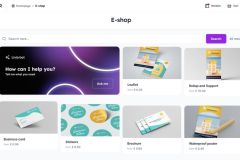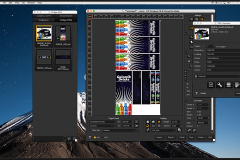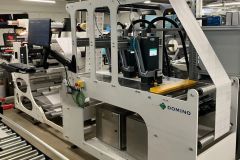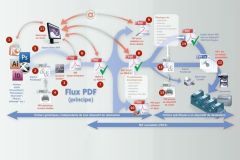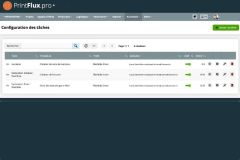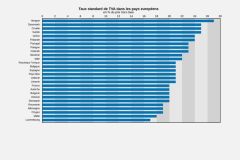We went to ask Yann Venance , web-to-print consultant since 1998 at PrintFlux.
1. Internally, in the print shop.
Unless you have a clean room (if you don't know what it is, you don't have one ;-)) it is probably the cheapest solution, but its limits are quickly reached. Servers (at least 2 for security), professional internet connection, security, backup, Service Level Agreement (SLA), archiving, system administration are all topics you will have to deal with. Plan a minimum budget of 15 to 20,000 euros for hardware alone, not including the salaries of the technicians.
Disadvantages
- Requires perfect technical mastery.
- Costs difficult to estimate at the outset.
- Set up time.
- Risk of not passing customer audits after installing everything.
- Integration of SaaS solutions with customers' existing applications and access to applications with a single password (Single Sign-On or SSO).
Benefits
- Autonomy and independence
2. In-house, hosted by a service provider
Although the internet connection and in some cases the server are provided by the provider through a subscription, you remain the system administrator of your platform. This has almost the same advantages and disadvantages as the solution hosted at your home adding reliability.
3. Application in SaaS mode "software as a service".
The software as a service (SaaS) is a model where the publisher provides the software, but also takes care of all the constraints of hosting the technical platform. SaaS is therefore the joint delivery of means, services and expertise that enable companies to assimilate their service as an operating cost rather than an investment.
Disadvantages
- Customer data is generally stored on the servers of the technical service provider, the confidentiality of the data and its future retrieval must be contractualized.
- Provide for procedures to manage employee entitlements when changing assignments or leaving the company.
Benefits
- Speed of deployment: It is common to see a SaaS application deployed in a few weeks, where it takes 12 to 24 months for an ERP.
- Simplified management, no technical charges. The maintenance, the parameter setting, the various backups are managed by the service provider. Very high availability without the need for in-house specialists.
- Total control of the budget, the price includes the cost of the software, maintenance and infrastructure.
- Economical, it is much cheaper than internally hosted software.
- Integration of SaaS solutions with existing applications in the customer's environment and access to applications with a single password (Single Sign-On or SSO, LDAP).
- An automatically updated application, always incorporating the latest news.
- Environmentally friendly.
- Be accompanied by the provider.
At PrintFlux We mainly offer SaaS mode to meet the need for reliability, cost and speed. We also offer a hosted server solution adapted to complex contexts (defence secret, banking, public administrations, etc.)
Present since 1998 on the W2P market, PrintFlux powers a wide range of franchises, major accounts, administrations, etc. Thanks to this field experience, we provide printers with an immediately operational solution.










